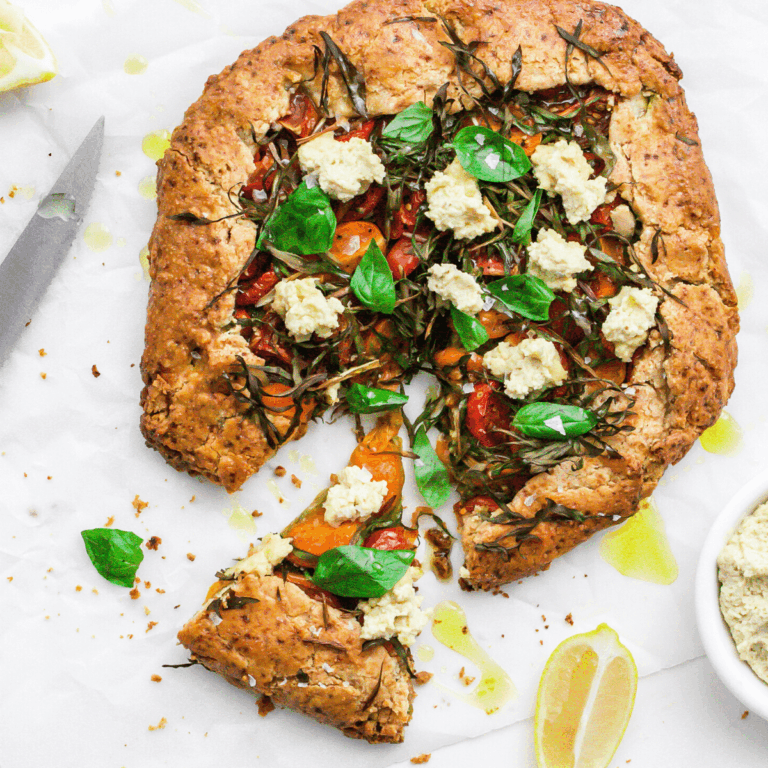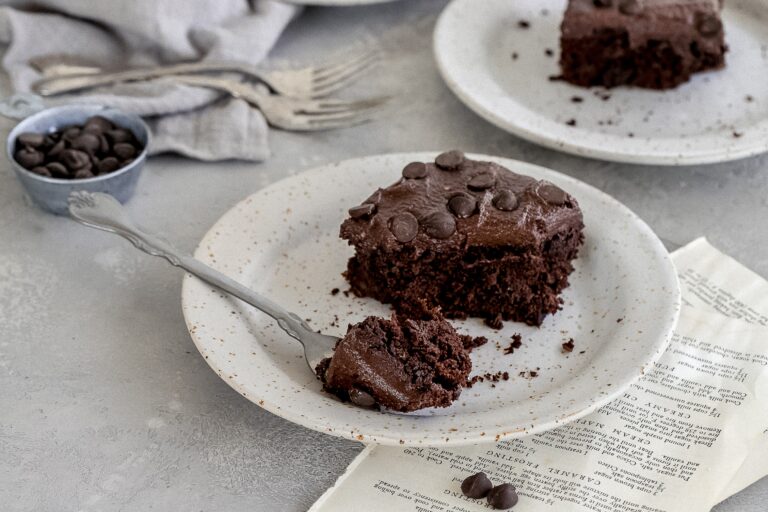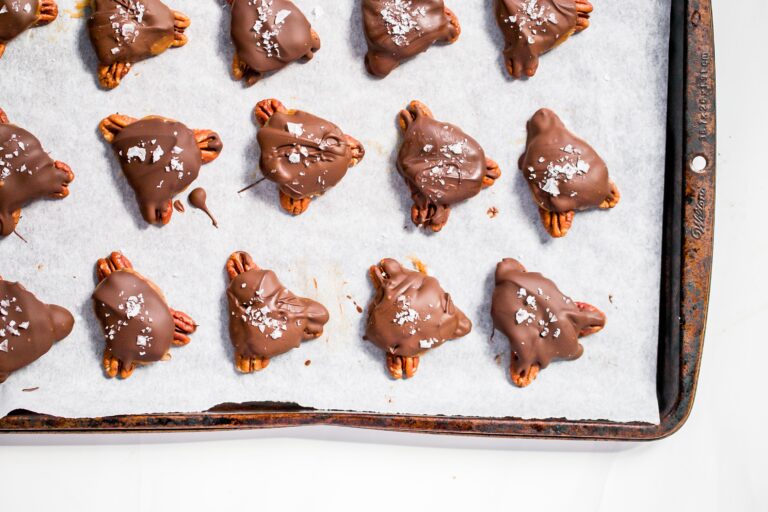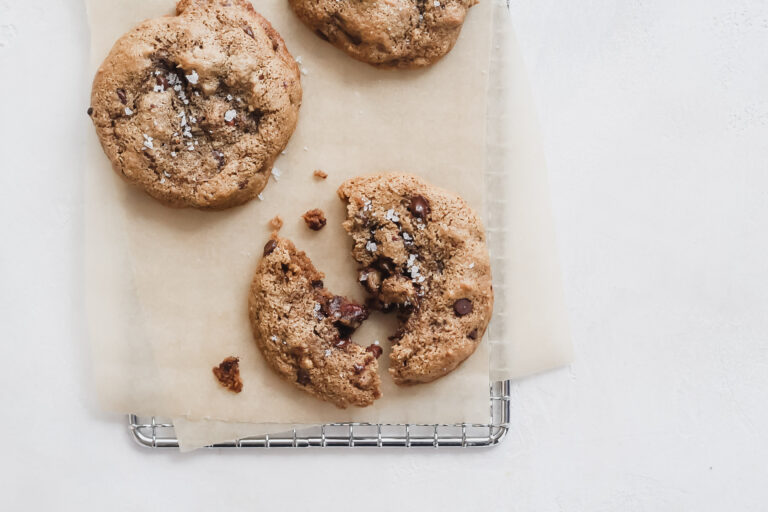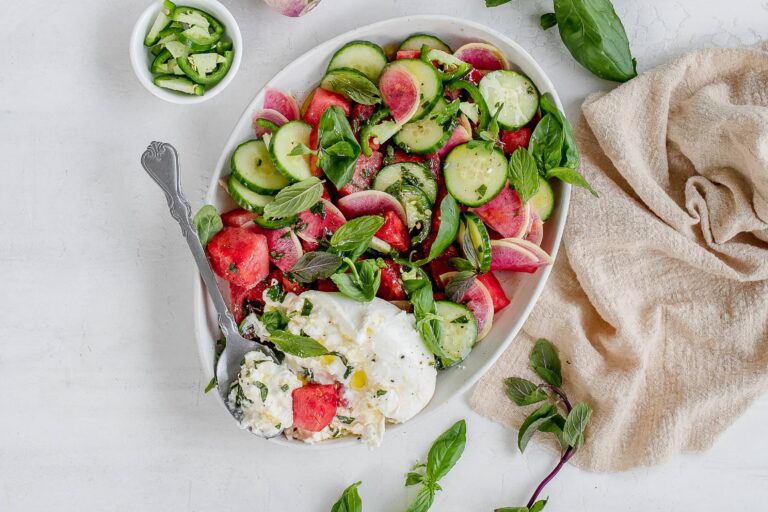Paleo Chocolate Pudding with Gelatin

Curious about collagen, or what about gelatin? In this blog post I am sharing with you my favourite paleo chocolate pudding made with gelatin and coconut milk. As much as I love my chocolate chia avocado pudding, I wanted to create something a bit different. I tasted a very similar version of this pudding at one of my favourite healthy restaurants in Toronto and knew that I wanted to recreate this at home. It took a couple of tries, but I figured out a way to make it that I think you’ll love too.
This post was originally shared in 2018 but has since been updated with newer photos and clearer directions.
All About Collagen and Gelatin
Collagen has kind of been all the rage lately in the health and wellness space and I’ve been enjoying it for a few years now. I have seen an improvement in joint pain, as well as externally with my hair, skin and nails. I was curious to try gelatin in a recipe so I got some from one of my favourite collagen companies, Vital Proteins.
Want to learn more about collagen and see how I incorporate it in my favourite energy ball recipes, check out my birthday cake energy balls.

What is Collagen Used For:
Collagen is found within us, as it is the most abundant protein in our bodies. It is found in our muscles, tendons, bones, skin, digestive system and blood vessels. Since it is so abundant, you may be wondering why do I need to consume it as a supplement? Well, unfortunately as we age, our collagen production begins to decline. This starts to happen in our 30’s.
The type of collagen we choose to take matters. Currently, there is no plant-based or vegan source of collagen. So it will come from animals, usually bovine or marine. Either choice is good, but I would suggest no matter what, you ensure that the brand you are getting is of high quality. If it is bovine, grass-fed and organic/pastured is preferred and marine collagen should be from a wild caught source.
I like Vital Proteins Collagen in either bovine or marine. And I also enjoy the collagen from Sproos, a Canadian company.

What are the benefits of collagen:
There are numerous health benefits of collagen, here are some of them:
- Helps with joint health
- Improves digestion
- Helps support your gut health
- Great for hair, skin and nails
- Helps with tendon and bone strength
What is Gelatin Used for:
Gelatin is something that is a little bit different. Essentially, it’s what makes jell-o jiggle and wiggle. So why exactly would you want to use it? Well, similar to collagen, gelatin is derived from collagen and obtained from various animal body parts. And although that doesn’t sound too appetizing, it’s very nutrient dense and contains lots of the same goodness that collagen does. However, it acts a little differently than collagen.
It will dissolve in hot water, but gel up in cold, making it the perfect addition to my paleo chocolate pudding. That gelatinous quality is one of the best things about it because when we consume it, it helps give our bodies that same elasticity.
Similar to collagen, it’s also important to ensure high quality gelatin, so you won’t find that in store bought jell-o unfortunately. Aim for the same grass-fed and organic/pastured bovine source to ensure it is of the highest quality.

Here are the health benefits of gelatin:
- Helps with gut health and digestion
- Protects your joints and helps with joint pain
- Improves your skins health and appearance
- Can help maintain strong bones
A lot of the same benefits from collagen are also found in gelatin because they’re structurally very similar as they contain the same amino acids. However, the way that they are used is very different. Gelatin forms a gel like consistency when mixed with cold water and can also help to thicken hot liquids like soups and stews and this paleo chocolate pudding! This makes it more practical for cooking.

How to Make This Paleo Chocolate Pudding
The first thing you’ll need to do is bloom the gelatin.
Wait, what does blooming the gelatin mean? This is needed to get a smooth texture in the finished product, which is exactly what we want to have!
To do this, you’ll sprinkle the gelatin into a liquid (in this case some of the coconut milk) and let it sit for 3 to 5 minutes. Just let it sit, don’t mix it yet!

Once this is done, you’ll heat up the rest of the ingredients (the remaining coconut milk, cocoa powder, honey, vanilla and salt).

From there, once it’s heated through, you’ll slowly add this into the bowl with the gelatin, stirring as you mix. Stirring with a whisk will help to ensure that there aren’t any clumps and everything is incorporated as it should and smooth.

From here, you’ll place a sieve over top of the jars you’ll be using to store your chocolate pudding in. Pour the mixture through the sieve and then place in the fridge to firm up. Place the lid on and let it sit for at least 2 hours, or until firm.

Paleo Chocolate Pudding:
This paleo chocolate pudding has gelatin in it which makes it thicken up quite nicely and makes it more jell-o like. I really like this type of consistency plus when you add the gelatin, it also boosts the protein content as well.
Depending on how much gelatin you add to the pudding, you can make it thicker or thinner. It’s your preference.
If you choose to use the original recipe as is written out below, the consistency will be quite thick. If you choose to use 1 tbsp gelatin to 2 cans of coconut milk, the consistency will be thinner and more pudding like.
For example, see the first photo below and compare that to the second photo in terms of consistency. The first photo was made using 1 tbsp gelatin to 1 can of coconut milk, the second is 1 tbsp for 2 cans of coconut milk.


Which Sugars to use In this Paleo Chocolate Pudding
If you want to make this keto, use the lakanto monkfruit sweetener as I did. I truly find this type of sweetener the best tasting which is why I use it over stevia. With that being said, I don’t follow any particular diet (in fact I am anti diet) but I know many still do for other health reasons. So I am giving you options with this recipe.
Feel free to use other sugars in its replacement, such as coconut sugar, brown sugar, honey or anything else. You can add the additional topping such as coconut whipped cream and chocolate chips if you want, or add some fresh berries (or pomegranate) or nothing at all. The choice is yours!
This paleo chocolate pudding is quite rich, which is why I suggest serving it in smaller quantities but you do you! I used small mason jars to store them in.

This post contains affiliate links, which means I may receive a small commission at no extra cost to you. I only share products and services I have personally used and love. Disclosure here.
Print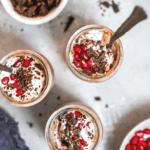
Paleo Chocolate Pudding with Gelatin
- Prep Time: 10
- Inactive Time: 120
- Cook Time: 5
- Total Time: 2 hours 15 minutes
- Yield: 4 1x
- Category: dessert
- Method: stovetop
- Cuisine: American
- Diet: Gluten Free
Description
A deliciously decadent paleo chocolate pudding that’s extra thick with the help of gelatin. Easily make it sugar free too!
Ingredients
- 1 can coconut milk full fat
- 1 tbsp gelatin
- 1/4 cup raw cacao powder
- 2 tbsp lakanto monkfruit sweetener
- 1/2 tsp vanilla extract
- pinch sea salt to taste
Instructions
- Add 1/4 cup of the coconut milk to a large mixing bowl, and then sprinkle in the 1 tbsp gelatin evenly. Let it sit without mixing.
- Add the remaining coconut milk to a small pot over medium heat and whisk in the raw cacao powder, sweetener of choice, vanilla and sea salt. Mix well.
- Remove the warmed coconut milk and slowly add to the large bowl of gelatin and coconut milk while whisking constantly. Stir and whisk until there are no clumps.
- Use a fine mesh sieve while pouring into your containers to ensure it is smooth and no clumps remain.
- Once it has been poured into your containers, seal the top and let it sit in the fridge for about 2 hours or more.
- Remove from the fridge and top with chocolate chips and some coconut whipped cream or fresh berries.
Notes
No monkfruit sweetener: use honey, coconut sugar, brown sugar or another sweetener of your choice.

